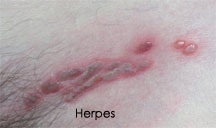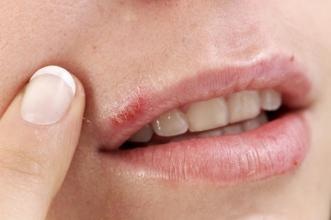Herpes Simplex 1 and 2: What are the Differences?
Herpes simplex 1 and 2 are actually two different diseases caused by two different viruses.
Although they belong to the same family, these viruses have different characteristics.
When people encounter the word herpes, they usually think of genital herpes.
But there are other types of herpes. In fact, there are 8 known pathogens to humans.
For the purposes of this article, we will tackle just 2--oral herpes and genital herpes.
So how do we differentiate one from another?
Here is a basic guide on how to tell if what you (or your partner) have may be HSV 1 or HSV 2.
Body Area Affected

Herpes Simplex may affect different body areas. Herpes simplex type 1, or oral herpes, often affects the mouth, lips, nose, and other parts of the face. The herpes virus type 1 prefers the oral region unlike the herpes virus type 2, or genital herpes, that affects the genital as well as the anal area.
Here’s where it gets tricky. Both herpes simplex 1 and 2 can affect the oral and genital areas. That means that herpes simplex type 1 can affect the genital area and herpes simplex type 2 can affect the mouth area.
Of course, this cross-infection occurs through oral sex. However, the chance of getting herpes simplex 1 on the genital area and herpes simplex 2 on the mouth is lower than getting them on their preferred body part.
Signs and Symptoms of Herpes Simplex 1 and 2

Since both viruses affect different areas of the body, the signs and symptoms of herpes also occur in different areas.
For herpes simplex 1, the most common symptoms are recurrent cold sores on the mouth and other areas of the face.
Typically, these sores first appear as raised red bumps that may be filled with pus. After a few days, the sores form crusts and then heal.
It can get very embarrassing and worrisome especially when an important event, interview, or date is coming up. Below is a comparison of the general and specific herpes outbreak symptoms:
|
The following are the symptoms for herpes simplex 2:
|
There are also symptoms that are not related to the genital or oral area such as:
|
Herpes Shedding
Shedding refers to the “giving off” of the herpes virus from their respective areas of infection.
What happens is that the virus travels up the nerve endings to the surface of the initial site of infection and actively sheds.
It can happen at quite an unpredictable number of times each year. Still contagious at this point.
For both herpes simplex 1 and 2, shedding is more likely during outbreaks.
During normal days, herpes simplex 1 can shed from 6 to 33% of days from the mouth and 5% of days from the genitals.
For herpes simplex 2, the virus can shed from 15 to 25% of days from the genitals and 1% from the mouth.
Recurrence
Oral herpes recurrence occurs once every other year, sometimes even less.
Genital herpes recurs every about 3 to 5 times a year. For some people, however, it may recur more than 10 times per year.
The severity of the symptoms varies from one person to another. Although the recurrence eventually lessens, the shedding of the virus does not.


